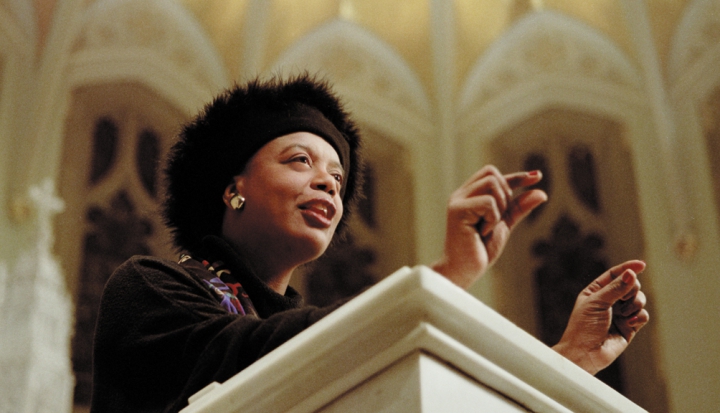Who says that all the top positions in the church need to go to priests and bishops?
The parish I grew up in, like many Catholic churches before it, had two centers of power. The first and most obvious was the pastor himself: Father Henkel was a formidable presence, serving our parish from before my birth until his “retirement” after my sophomore year of college—when we buried him. The other person of influence was never whatever associate pastor was blowing through, but our parish secretary, Mrs. Larison. She served our parish for two decades not only as a competent administrator but as a moderating influence when Father Henkel’s old-school grumpy streak got the better of him, usually in relation to unruly infants during Mass.
One wonders how many ruffled feathers Mrs. Larison smoothed among parishioners and parents from the parish’s school in her role as the first welcoming face in our parish. Mrs. Larison’s authority in the parish went only so far, of course, limited to the power of persuasion and occasional damage control. It’s a limit still faced by women who work in parishes and dioceses, though some have taken on more of the heavy lifting in pastoral ministry.
Even Pope Francis, while he has dismissed the possibility of women’s ordination, acknowledged in his September interview in the Jesuit magazine America that our challenge today is “to think about the specific place of women also in those places where the authority of the church is exercised. . . .” The pope also recently said that women were “more important” than bishops and priests, just as Mary was more important than the disciples—but he left it at that.
The trouble is that ever since Pope John Paul II judged in 1994 that the church has no authority to ordain women to the priesthood and forbade further debate about the topic, there has been little movement on the other roles of women in the church. The crack in the door when it comes to ordination is so slim that Cardinal Kurt Koch, head of the Pontifical Council for Promoting Christian Unity, said in September that “it would need the authority of an entire Council even to reopen the discussion,” according to the UK Tablet. While many have hoped for a place for women in the diaconate, Koch added that it was “difficult to conceive of a diaconate for women that does not lead to women’s ordination as priests and bishops.”
We can’t expect an ecumenical council any time soon, but we may still hope for some movement on the issue of women’s leadership beyond pious comparisons of all women to Mary, however well intentioned. Since the official exercise of church authority, as a pastor for example, remains canonically tied to ordination, and women cannot be ordained, the only option for their further participation in the leadership of the church is to untie that legal knot.
Mrs. Larison’s cohort of faithful churchwomen has now given way to women who serve as parish leaders (though without the title “pastor”), diocesan chancellors, and directors of religious education. Changing or clarifying the law to allow women in positions of pastoral authority to exercise it canonically—such as naming a laywoman the canonical pastor of a parish—would be a step forward in women’s ministry in the church.
A lay pastor would secure the services of a local priest to meet the parish’s sacramental needs, including Sunday Mass, though relaxing some liturgical restrictions to allow a lay pastor to proclaim the gospel and preach might also be helpful. This would hardly be a major innovation, since the use of “supply clergy” is already common practice in many large parishes.
It should now be clear that the authority of Catholic women ought not be limited to the power of persuasion; it deserves both voice and vote. Since ordination is off the table, some other solution must be sought that will lead to a church in which women are, if not more important than priests and bishops, at least equally so, sharing equally in the governance and guidance of the people of God.
This article appeared in the November 2013 issue of U.S. Catholic (Vol. 78, No. 11, page 8).
Image: David Kamba











Add comment